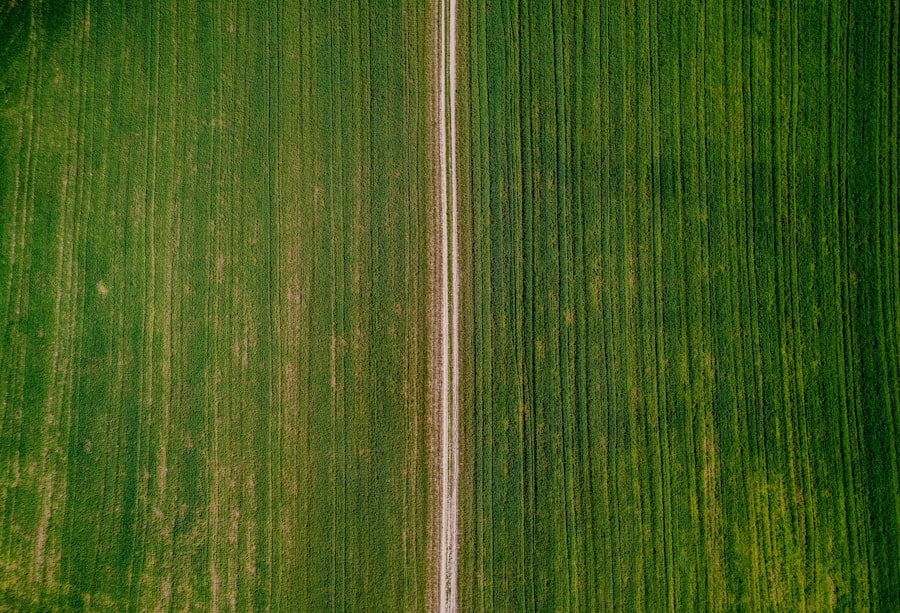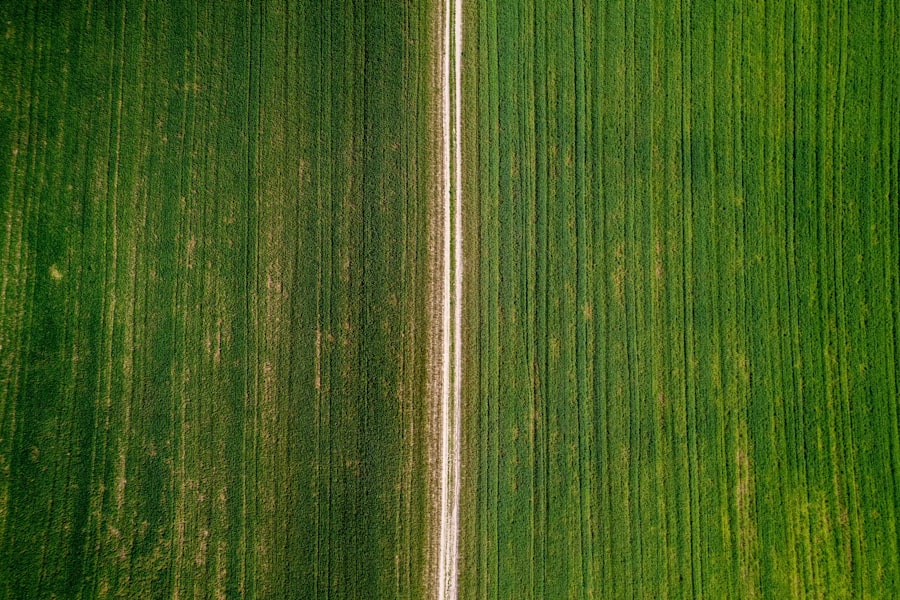As you step into the world of agriculture today, you may notice a significant transformation taking place, driven by the integration of artificial intelligence (AI). This technology, once confined to the realms of science fiction, is now becoming a cornerstone of modern farming practices. AI is not just a buzzword; it represents a paradigm shift in how you approach farming, enabling you to make data-driven decisions that enhance productivity and sustainability.
The agricultural sector, which has traditionally relied on manual labor and experience-based knowledge, is now embracing advanced technologies that promise to optimize every aspect of farming. The adoption of AI in agriculture is not merely about replacing human labor; it’s about augmenting your capabilities as a farmer. With AI tools at your disposal, you can analyze vast amounts of data, predict weather patterns, and monitor crop health with unprecedented accuracy.
This technological evolution is essential as the global population continues to rise, demanding more food while facing challenges such as climate change and resource scarcity. By understanding how AI can be harnessed in agriculture, you can position yourself at the forefront of this exciting transformation.
Key Takeaways
- AI in agriculture is revolutionizing the way farmers monitor and manage their crops, livestock, and sustainable farming practices.
- The benefits of AI in farming include increased efficiency, improved decision-making, and reduced environmental impact.
- AI is revolutionizing crop monitoring and management by providing real-time data on crop health, yield predictions, and pest detection.
- Precision agriculture is being transformed by AI, allowing for more accurate and targeted application of resources such as water, fertilizers, and pesticides.
- AI is shaping the future of livestock monitoring and management by enabling real-time tracking of animal health, behavior, and productivity.
The Benefits of AI in Farming
The benefits of incorporating AI into your farming practices are manifold. First and foremost, AI enhances efficiency. By automating routine tasks such as planting, watering, and harvesting, you can save time and reduce labor costs.
For instance, AI-powered machinery can operate with precision, ensuring that seeds are planted at optimal depths and intervals. This level of accuracy not only maximizes yield but also minimizes waste, allowing you to make the most of your resources. Moreover, AI provides you with valuable insights that can lead to better decision-making.
With access to real-time data analytics, you can monitor soil conditions, weather forecasts, and market trends. This information empowers you to make informed choices about when to plant or harvest crops, how to manage pests, and which fertilizers to use. As a result, you can increase your productivity while also reducing the environmental impact of your farming practices.
The ability to predict outcomes based on data analysis means that you can adapt quickly to changing conditions, ensuring that your farm remains resilient in the face of challenges.
How AI is Revolutionizing Crop Monitoring and Management

Crop monitoring has traditionally been a labor-intensive process, requiring constant vigilance and manual checks. However, with the advent of AI technologies such as drones and satellite imagery, you can now monitor your crops from above with remarkable efficiency. These tools provide you with high-resolution images and data that reveal the health of your plants, allowing you to identify issues such as disease or nutrient deficiencies before they escalate into larger problems.
Additionally, AI algorithms can analyze this data to provide actionable insights tailored to your specific crops and conditions. For example, machine learning models can predict how different variables—such as temperature, humidity, and soil composition—affect crop growth. By leveraging these insights, you can implement targeted interventions that optimize growth conditions and enhance overall yield.
This level of precision in crop management not only saves time but also ensures that you are using resources judiciously.
The Role of AI in Precision Agriculture
Precision agriculture is a game-changer for modern farming, and AI plays a pivotal role in its implementation. This approach focuses on managing variability in fields to optimize returns on inputs while preserving resources. With AI-driven technologies like soil sensors and weather stations, you can gather detailed information about your land’s unique characteristics.
This data allows you to tailor your farming practices to meet the specific needs of different areas within your fields. For instance, AI can help you determine the exact amount of water or fertilizer required for each section of your farm. By applying inputs more accurately, you not only enhance crop performance but also reduce waste and environmental impact.
Furthermore, AI systems can continuously learn from the data they collect, improving their recommendations over time. This adaptability means that as conditions change—whether due to climate shifts or evolving agricultural practices—you can stay ahead of the curve and maintain optimal productivity.
AI and the Future of Livestock Monitoring and Management
The integration of AI into livestock management is another area where significant advancements are being made. As a farmer with livestock, you understand the importance of monitoring animal health and behavior closely. AI technologies such as wearable sensors and smart collars enable you to track vital signs and activity levels in real-time.
This data allows for early detection of health issues, ensuring that your animals receive timely care. Moreover, AI can assist in optimizing feeding practices by analyzing individual animal needs based on their age, weight, and health status. By tailoring diets accordingly, you can improve growth rates and overall herd health while minimizing feed costs.
Additionally, AI-driven analytics can help you manage breeding programs more effectively by identifying the best genetic pairings based on performance data. This level of insight not only enhances productivity but also contributes to better animal welfare.
The Impact of AI on Sustainable Farming Practices

Sustainability is a pressing concern in agriculture today, and AI offers innovative solutions to address these challenges. By utilizing AI technologies, you can implement practices that reduce environmental impact while maintaining productivity. For example, precision irrigation systems powered by AI can optimize water usage by delivering the right amount at the right time based on real-time soil moisture data.
This not only conserves water but also promotes healthier crops. Furthermore, AI can assist in pest management by predicting outbreaks based on environmental conditions and historical data. By applying targeted treatments only when necessary, you can minimize chemical use and protect beneficial insects.
This approach aligns with sustainable farming principles while ensuring that your crops remain healthy and productive. As consumers increasingly demand sustainably produced food, adopting AI-driven practices positions you favorably in the market.
Challenges and Limitations of AI in Agriculture
Despite the numerous advantages that AI brings to agriculture, there are challenges and limitations that must be acknowledged. One significant hurdle is the initial investment required for implementing AI technologies. For many farmers, especially those operating on smaller scales, the cost of advanced machinery and software can be prohibitive.
Additionally, there may be a steep learning curve associated with adopting new technologies, which could deter some from making the transition. Another challenge lies in data management and privacy concerns. As you collect vast amounts of data from various sources—such as sensors and drones—ensuring its security becomes paramount.
There is also the risk of over-reliance on technology; while AI can provide valuable insights, it should complement rather than replace human intuition and experience in farming decisions. Balancing technology with traditional knowledge is essential for achieving optimal results.
The Future of AI in Agriculture: Opportunities and Considerations
Looking ahead, the future of AI in agriculture is filled with opportunities for innovation and growth. As technology continues to evolve, you can expect even more sophisticated tools that enhance efficiency and sustainability in farming practices. The integration of AI with other emerging technologies—such as blockchain for supply chain transparency or biotechnology for crop improvement—could further revolutionize the industry.
However, it’s crucial to approach these advancements thoughtfully. As you embrace AI in your agricultural practices, consider the ethical implications surrounding data usage and privacy. Collaboration among farmers, tech developers, and policymakers will be essential in shaping a future where technology serves as a tool for empowerment rather than a source of inequality.
In conclusion, as you navigate the complexities of modern agriculture, embracing AI offers a pathway toward increased productivity and sustainability. By understanding its benefits and challenges, you can harness this powerful technology to enhance your farming practices while contributing positively to the environment and society at large. The journey may be challenging, but the rewards are well worth the effort as you position yourself at the forefront of agricultural innovation.
A related article to AI in Agriculture: Cultivating the Future of Farming discusses the challenges and rewards of educating machines. The article titled “Teaching AI: The Challenges and Rewards of Educating Machines” explores the complexities of training artificial intelligence systems to perform tasks efficiently and accurately. To learn more about this topic, you can read the article here.
FAQs
What is AI in agriculture?
AI in agriculture refers to the use of artificial intelligence technologies such as machine learning, computer vision, and data analytics to improve various aspects of farming and agricultural practices. This includes crop monitoring, yield prediction, soil analysis, and autonomous farming equipment.
How is AI being used in agriculture?
AI is being used in agriculture for a variety of applications, including precision farming, crop monitoring, predictive analytics, autonomous machinery, and livestock monitoring. These technologies help farmers make data-driven decisions, optimize resource usage, and improve overall productivity.
What are the benefits of AI in agriculture?
The use of AI in agriculture can lead to increased crop yields, reduced resource wastage, improved pest and disease management, and more sustainable farming practices. It also enables farmers to make more informed decisions and adapt to changing environmental conditions.
What are some examples of AI technologies in agriculture?
Some examples of AI technologies in agriculture include drones for crop monitoring, sensors for soil analysis, predictive analytics for yield forecasting, autonomous tractors for planting and harvesting, and computer vision for weed detection and sorting produce.
What are the challenges of implementing AI in agriculture?
Challenges of implementing AI in agriculture include the high initial cost of technology, the need for reliable internet connectivity in rural areas, data privacy and security concerns, and the requirement for training and education for farmers to effectively use these technologies.






